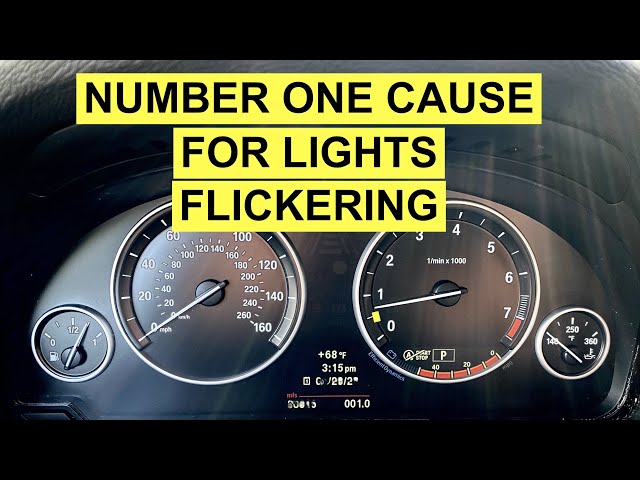Experiencing flickering dash lights when attempting to start your car can be a frustrating situation for any driver. This issue can indicate a variety of problems ranging from minor electrical glitches to more significant mechanical failures. In this comprehensive guide, we will delve into the causes of flickering dash lights, how to troubleshoot the problem, and steps to take for resolution.
Understanding the Dash Lights
Before we dive into the troubleshooting process, it’s essential to understand what the dash lights are and what they signify. Dash lights are indicators on your vehicle’s dashboard that inform you about the status of various systems. Some common lights include:
- Battery Warning Light: Indicates a problem with the car’s charging system.
- Check Engine Light: Signals an issue with the engine or emissions system.
- Oil Pressure Light: Warns of low oil pressure, indicating potential engine problems.
- ABS Light: Indicates a malfunction in the anti-lock braking system.
Common Causes of Flickering Dash Lights
When you try to start your car and the dash lights flicker, several issues could be at play:
1. Weak Battery
A common cause of flickering lights is a weak or failing battery. If the battery does not have enough charge, it can lead to insufficient power being supplied to the electrical systems, resulting in flickering lights.
2. Bad Alternator
The alternator is responsible for charging the battery and powering the electrical system when the engine is running. If the alternator is failing, it may not be providing a steady charge, leading to flickering lights.
3. Loose or Corroded Battery Connections
Loose or corroded battery terminals can prevent the battery from delivering power effectively. This can cause intermittent electrical connections, leading to flickering lights.
4. Faulty Ignition Switch
Problems with the ignition switch can disrupt the power flow to the dashboard and other electrical components, resulting in flickering lights when starting the car.
5. Wiring Issues
Damaged or frayed wiring can cause electrical shorts or disruptions in power delivery. This can lead to erratic behavior of the dash lights.
Troubleshooting the Issue
If you’re faced with flickering dash lights, follow these troubleshooting steps:
Step 1: Check the Battery
- Inspect the battery for any physical damage.
- Ensure that the battery terminals are clean and tightly connected.
- Test the battery voltage using a multimeter. A healthy battery should read around 12.6 volts when fully charged.
Step 2: Inspect the Alternator
- Look for any unusual noises coming from the alternator.
- Check the alternator output with a multimeter while the engine is running. It should read between 13.7 to 14.7 volts.
Step 3: Examine Wiring and Connections
- Inspect the wiring harness for any visible damage or wear.
- Check all connections for tightness and cleanliness.
Step 4: Test the Ignition Switch
- Turn the key to the “on” position without starting the engine. Observe the dash lights. If they flicker, the ignition switch may be faulty.
When to Seek Professional Help
If you have completed the troubleshooting steps and the issue persists, it may be time to seek professional help. A qualified mechanic can perform a more in-depth diagnosis using specialized tools. They can check the car’s electrical system, analyze codes from the onboard computer, and pinpoint the issue.
Preventive Measures
To minimize the chances of experiencing flickering dash lights in the future, consider the following preventive measures:
- Regularly inspect and maintain your battery and charging system.
- Keep battery terminals clean and free from corrosion.
- Conduct periodic electrical system checks, especially before long trips.
Flickering dash lights when trying to start your car can be indicative of various issues, primarily related to the battery and electrical system. By understanding the potential causes and following the troubleshooting steps outlined in this guide, you can diagnose the problem effectively. If needed, don’t hesitate to consult a professional to ensure your vehicle remains in top condition.
Stay safe on the road, and always be proactive with your vehicle maintenance!

